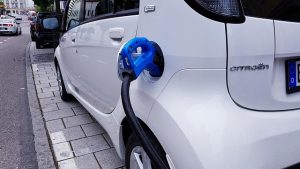If you’ve been considering getting a new car under a novated lease scheme, you’ve probably already heard that if you get an electric vehicle, there won’t be any fringe benefit tax involved. Sounds like a great idea to get an EV, right? But before you head on down to the local car dealers to have a look at the latest models before signing up to a salary sacrifice package, you might need to think how things may change for you with an electric vehicle.
You see, an electric vehicle might look like a standard ICE (internal combustion engine) vehicle – it’s got four wheels, lights, a steering wheel and usually five seats, depending on what you need and choose. However, there are some differences that are important to consider.

The Big Difference With An Electric Vehicle
The main difference that all drivers of EVs will notice is the fact that charging up with electrons isn’t the same as filling up with petrol or diesel. With petrol or diesel, you head on round to your nearest station, fill up the tank, pay and drive away, and the whole process takes about 10 minutes, unless the local petrol station is insanely busy for some reason. Petrol stations are usually easy to spot with their big logos and neon signs spelling out today’s prices (don’t get me started on today’s prices!). However, EV charging stations are a little harder to find. Thank goodness for apps! Before you get your electric vehicle, it might be a good idea to scout out all the places where you’re likely to go and find where the charging stations are.
Charging takes a lot longer than filing up with fuel. This means that on a longer journey, or if your style of motoring puts a lot of demand on the battery, you will need to allow time in your commute or trip to charge up – and always allow more time to charge than the time it takes to charge. After all, if someone gets to the petrol pump before you do, you don’t have long to wait. But if someone gets to the charging point before you do, you don’t just have to wait for your charge time; you have to wait for them to charge as well. So factor that in when planning your trips.
While thinking about charging up and trip planning, always check the battery’s charge before setting up. This is especially the case if you’re going to go out of urban areas. If you run out of petrol on the side of the road, it’s possible to find some way to get to a bowser with a jerrycan then get back to top up, but you can’t do that with electricity. So don’t push your luck. Batteries can’t “run on fumes”, even if you make the most of regenerative braking.
The Logistics Of Charging An EV
You may think that charging at home would save a lot of the hassles of electric vehicle ownership. You are right there – although you’ll need to factor this in when planning your domestic power bill (but you’ll be saving on fuel, so that probably evens out and you probably end up saving a few smackeroos). This is easiest to do with a charging box, which can do the job overnight once you’re home from work, as opposed to a regular bog-standard power cable. You will need to get an electrician to install one of these. The good news is that you can get the cost of installing one of these covered by the terms of your novated lease (talk to us about arranging this).
Whether or not the cost of charging an electric vehicle at home is taken care of by your employer or not will depend on the terms of the lease. If, however, your boss is happy enough to take care of the fuel costs as part of a salary sacrifice package, she or he should allow you to cover the costs of charging as well. This does require a bit of fine-tuning and negotiation, so make sure that you discuss this with us first.
You also have to remember to take the cables with you wherever you go. Again, it’s not like a petrol pump, where the hose that delivers the fuel into your tank is part of the bowser. Instead, you have to BYOC (bring your own cable). Different types of charger can take different cables, so it pays to bring them all with you, depending on what sort of charger is available. This means you’ll have to allow room in your luggage space for them (and don’t stack a suitcase, ten jackets and a picnic hamper on top of them).
Other Things To Consider With EVs
We all know that it’s the little things count, and there will be some other little things to get use to with an electric vehicle.
- EVs are super quiet. Although the latest models have a wee sound to alert pedestrians that they’re coming, this sound can be a bit too wee in noisy supermarket carparks. This means that pedestrians might not always hear you coming, so be super-alert.
- Anything that uses electricity will shorten the battery range. This means that if you’ve been in the habit of charging your phone or other devices while on the go, you’ll have to break it so you can get the best range possible.
